Status Of Stink Bugs In Full Season And Double Crop Soybeans In August 2021
DR. RAUL T. VILLANUEVA AND DR. ARMANDO FALCON-BRIINDIS
PRINCETON, KEN.
Stink bug species (Hemiptera: Pentatomidae) are present in soybean fields in Kentucky. They include phytophagous species, such as green stink bug (Chinavia hilaris), the complex of brown stink bugs (i.e., Euschistus variolarius, Euschistus servus), southern green stink bug (Nezara viridula), brown marmorated stink bug (Halyomorpha halys), and red shouldered stink bug (Thyanta custator), as well as predacious species, such as the spined soldier bug (Podisus maculiventris) and the roughed stink bug (Brochymena spp.) (Figures 1a and 1b). The phytophagous stink bugs are known to damage beans, especially during the reproductive stages.
Adult and immature stink bug stages feed on plant fluids by piercing the tender terminals and developing pods causing direct damage to beans. Such injuries may cause poor seed formation, seed abortion, reduced seed size, or seed deformation. Therefore, stink bugs reduce yield and quality of beans.
Scouting in August 2021
In early August, some soybean farmers and County Extension agents noticed an abundant number of stink bugs and egg-masses (Figure 2) in central and western Kentucky. These observations corresponded with our tallies conducted while scouting for insects in soybean fields during the first weeks of August. By mid-August, we had several calls from consultants and County Extension agents reporting high numbers of immature and adult stink bugs. Since mid-August, we conducted tallies in nine western Kentucky counties and one central Kentucky county (including Ballard, McCracken, Caldwell, Livingston, Lyon, Trigg, and Christian), research plots at the University of Kentucky Research and Education Center (REC, Caldwell County), Murray State University (Calloway County), and Western State University (Warren County).
In each location we noted whether the soybeans were full season or double crop and conducted tallies through 20 sweep nets per site on five or six locations per farm. Preliminary results of these findings are reported below.
Scouting Results in 2021
Stink bug numbers
The higher numbers of both immature and adult stink bug instars were tallied on the full season soybeans (Figure 3) that were in the R4 to R6 (full pod to beginning maturity) development stages while most of the double crop soybeans were in R1 to R3 (flowering to beginning pod). This abundance of stink bugs corresponds to the preference of stink bugs to feed on pods. The highest number of stink bugs was found in Calloway County (Figure 4).
Stink bug species
In 2020,we reported about the expansion of the brown marmorated stink bug toward in western Kentucky (KPN). In the current situation, we have observed that this trend continues with percentages of this species rising to 34.5 percent in 2021 (Figure 5) vs. the 13.9 percent obtained in 2020. Also, we are noticing that counties in western Kentucky that are near the Ohio river (Ballard, McCracken) have higher numbers. Personal communication reports indicated high numbers of brown marmorated stink bugs overwintering in human dwellings in these counties during the 2020-2021 winter season, compared to Lyon or Caldwell counties. The most abundant species is still the green stink bug, which was frequently seen mating on the soybean leaves during mid- and late August (Figure 6).
Management
Scouting for stink bugs is one of the most important tools for their management. Although the beat cloth was recommended in the past as a tool for tallying insects, currently narrower rows and higher plant densities make beat cloths difficult to use. Sweep netting is the preferred method to tally stink bugs. It is recommended that insecticides be applied if stink bug tallies are above the economic threshold (36 bugs/100 sweeps). Through communication with farmers and extension agents, many full-season soybean fields had been already sprayed, however, double-crop soybeans may need to be sprayed soon (first to third week of September) as pods are maturing and after scouting for the presence of stink bugs.
Pyrethroids or other mode of action insecticides can be used to reduce stink bug populations. ∆
DR. RAUL T. VILLANUEVA: Entomology Extension Specialist, University of Kentucky
DR. AMANDO FALCON-BRINDIS: Entomology Research Analyst, University of Kentucky
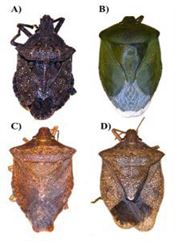
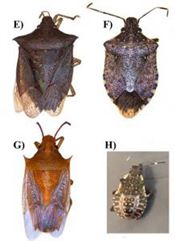
Figure 1a. (A) rough stink bug, (B) green stink bug, (C and D) two distinct brown stink bug species.
Photo: Armando Falcon-Brindis, UK
Figure 1b. (E) soldier spined stink bug, (F) brown marmorated stink bug, (G) rice stink bug, and (H) brown marmorated stink bug nymph.
Photo: Armando Falcon-Brindis, UK
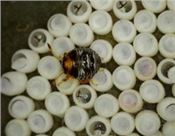
Figure 2. Egg mass with hatched and unhatched egss showing a single first nymphal stage of green stink bug (Chinavia hilaris).
Photo: Raul Villanueva, UK

Figure 3. Numbers of stink bugs on double crop and full season soybeans per 100 sweps. Black bars whithin the boxplots indicate the median and black dots are the outliers.
Figure 4. Numbers of stink bugs across
counties. Black bars whithin the boxplots indicate the median and black dots are the outliers.In Livington County. we collected only one stink bug so it seems the field might have been sprayed the day before tallies were conducted.
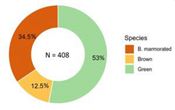
Figure 5. Percentages of the three most
reccurrent stink bug species tallied in nine counties. Tallies were completed using sweep nets during the last 2 weeks of August.
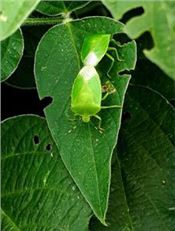
Figure 6. Green stink bugs mating on soybean at the UK REC
Photo: Armando Falcon-Brindis, UK